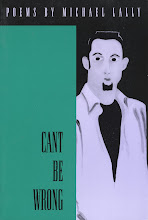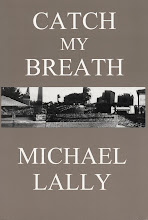1. THE BEATLES The Biography, by Bob Spitz, came out in ’05, but I picked up my copy in ‘06. Despite some inaccuracies, both subtle and blatant, including musically incorrect comments, he somehow creates suspenseful drama in a story already known, partly by including tons of details rarely if ever seen before.
2. THE COLLECTED POEMS OF TED BERRIGAN, also published in ’05, but I’ve been reading and rereading them since I got it, and they’re almost all poems I already knew. Ted was unique in the poetry world—not easy to do. Not only his innovative poetic strategies and voice come through in every poem, but his generous and entertaining personality shines through as well. (FYI my birthday as listed in the endnotes makes me a few years younger, not an entirely bad thing, but I like the truth, as elusive as it is.)
3. CROSSING THREE WILDERNESSES A Memoir by U Sam Oeur, with Ken McCullough, another ’05 book I finished in ’06. Sam is a Cambodian poet I knew at the U. of Iowa Writers Workshop back in the late 1960s—there’s a photo in the book I took of him in my apartment there. His remarkable life spans the end of the French colonial influence in Cambodia through the surge for democracy and the Khmer Rouge response and beyond. It’s dramatic history on a personal level, as well as the story of a poet’s development and passion for his art, even while in the custody of Pol Pot’s minions—“The Killing Fields” as experienced by a Buddhist William Carlos Williams.
4. POETS ON THE PEAKS Gary Snyder, Philip Whalen & Jack Kerouac in the North Cascades, text and photographs by John Suiter, from 2002—one of the remaindered books I picked up last year at Coliseum Books in Manhattan, which unfortunately bit the dust this year, another independent bookseller gone. This is a great take on what it was like for these guys starting out on their careers as poets, before the whole Beat-a-mania thing ignited—full of terrific new details and insights into their lives and work.
5. REDEMPTION the Life of Henry Roth by Steven G. Kellman, another ’05 book I waited until ’06 to pick up. Roth, known for his early novel CALL IT SLEEP became one of my all time favorites when late in life—trying to cash in on the unexpected popularity of that early novel when it was reprinted in paperback over thirty years after its initial, commercially-unsuccessful run, and became an instant classic—he wrote several sequels to the events described in SLEEP, novelistic renderings of his life as the son of Jewish immigrants struggling in the mostly Irish section of Harlem at the dawn of the 20th century, and his going on to become a part of the incredible Greenwich Village scene of the 1920s. Though Roth was brutally honest in those novels, exposing aspects of his life kept hidden for decades, it is the approach he took to telling that story that knocks me out. An elderly, ailing, widower living in a trailer in the Southwest, transferring the manuscript of the novels onto an early computer, he began addressing the computer as if it were his muse, and himself in his earlier drafts of the story he’s trying to tell, as well as his deceased wife, so that it is layered with the kind of dialogue-thinking I’m doing all the time and maybe you aren’t and therefore might not dig as much as I do, in which case this biography might work as an intro to why you might want to try catching up on that later series of novels Roth gathered under the general title MERCY OF A RUDE STREAM.
6. AFTER THIS by Alice McDermott. Her previous novels were all terrific, especially her last, CHILD OF MY HEART, about a young girl’s relationship to an older abstract artist in the Hamptons of a 1950s’ summer. AFTER THIS is a return to her usual Irish-Catholic-family stories, as in CHARMING BILLY and AT WEDDINGS AND WAKES. But her mastery of her craft has become even more refined and exquisite. If we had a USA equivalent of the Booker Prize, she should be its recipient. From the first few lines of the novel, I am in the world of her characters, completely, and by the first few pages I don’t want to leave. Coming from a similar background to a lot of her characters, maybe I’m prejudiced in favor of her subject matter, but I am also more attuned to any falseness or missteps in the setting and the telling, and there are none. She brings it all to life, to lives, that seem as much a part of my history as their own.
7. SELECTED LETTERS OF MARTHA GELLHORN edited by Caroline Moorehead, already mentioned in an earlier post, but worth mentioning again. These letters are honest, smart, insightful, and a great way to understand the issues of the times they span—from the 1930s to the ‘80s—and what it meant to be an independent woman in those times.
8. HUMAN LANDSCAPES FROM MY COUNTRY An Epic Novel in Verse by Nazim Hikmet, translated by Randy Blasing and Mutlu Konuk. Hikmet is sometimes called the “Walt Whitman of Turkey” because he is the father of modern Turkish poetry. But this, his masterpiece, is unlike any other “novel” or “poetry” you’ve ever read—an achievement in itself.
9. LEE MILLER A Life by Carolyn Burke. I wrote about Miller in an earlier post. This is a pretty good take on her life, though at times Burke’s interpretation of events, or of Miller’s actions and personality, I find presumptuous and not how I see it. Still, a good introduction to who Miller is, and what she accomplished.
10. SUITE FRANCAISE A Novel by Irene Nemirovsky, translated by Sandra Smith. The two parts that make up most of this extraordinary text, were drafts, written during wartime in occupied France by a woman who wouldn’t live to complete the three additional sections meant to tell the story of WWII from the perspective of those suffering through it. I can’t praise it enough. Maybe I’m just hung up on WWII because I was born at the start of it and my two oldest brothers were in the service toward the end of it and it resonated in so many films and books and photographs and newsreels and neighborhood stories when I was a boy. But this novel is so compelling, I think anyone will find it as poignant and engaging as I do.
Subscribe to:
Post Comments (Atom)
















No comments:
Post a Comment